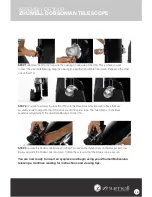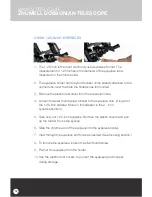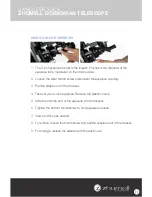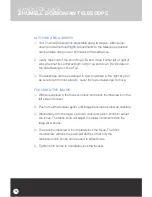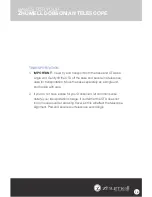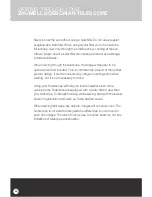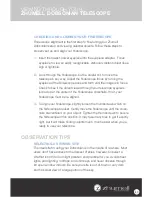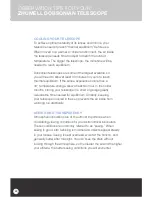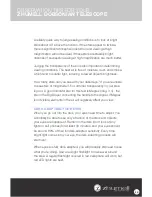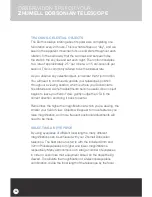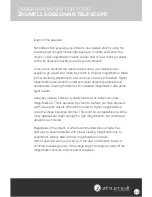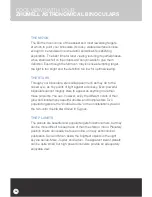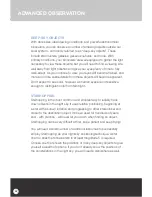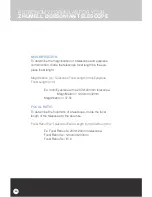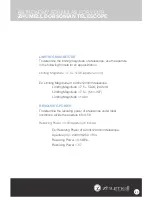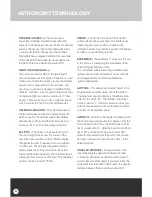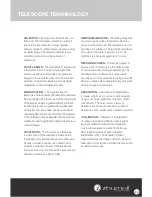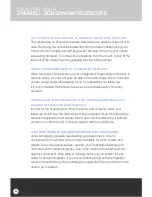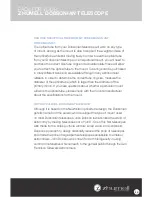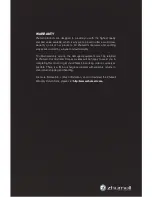
28
ADVANCED OBSERVATION
DEEP-SKY OBJECTS
With dark skies, ideal viewing conditions, and powerful astronomical
binoculars, you can observe a number of amazing objects outside our
solar system - commonly referred to as “deep-sky objects”. These
include star clusters, galaxies, gaseous nebulas, and more. With
primary conditions, your binoculars are well equipped to gather the light
necessary to view these objects, but you will need to find a viewing site
well away from light pollution and give your eyes plenty of time to fully
dark-adapt. As you continue to view, your eyes will become trained, and
more and more subtle details from these objects will become apparent.
Don’t expect to see color, however, as human eyes are not sensitive
enough to distinguish color from faint light.
STARHOPPING
Starhopping is the most common and simplest way to reliably track
down objects in the night sky. It uses relative positioning, beginning at
a star with a known location and progressing to other stars closer and
closer to the destination object. It’s been used for hundreds of years,
and - with practice - will never let you down when finding an object.
Starhopping can be very difficult at first, so be patient and keep trying!
You will need a small number of additional resources to successfully
employ Starhopping as your night-sky positioning technique. A star
chart or atlas that shows stars to at least magnitude 5 is required.
Choose one that shows the positions of many deep-sky objects to give
yourself a wealth of options. If you don’t already know the positions of
the constellations in the night sky, you will need a planisphere as well.


